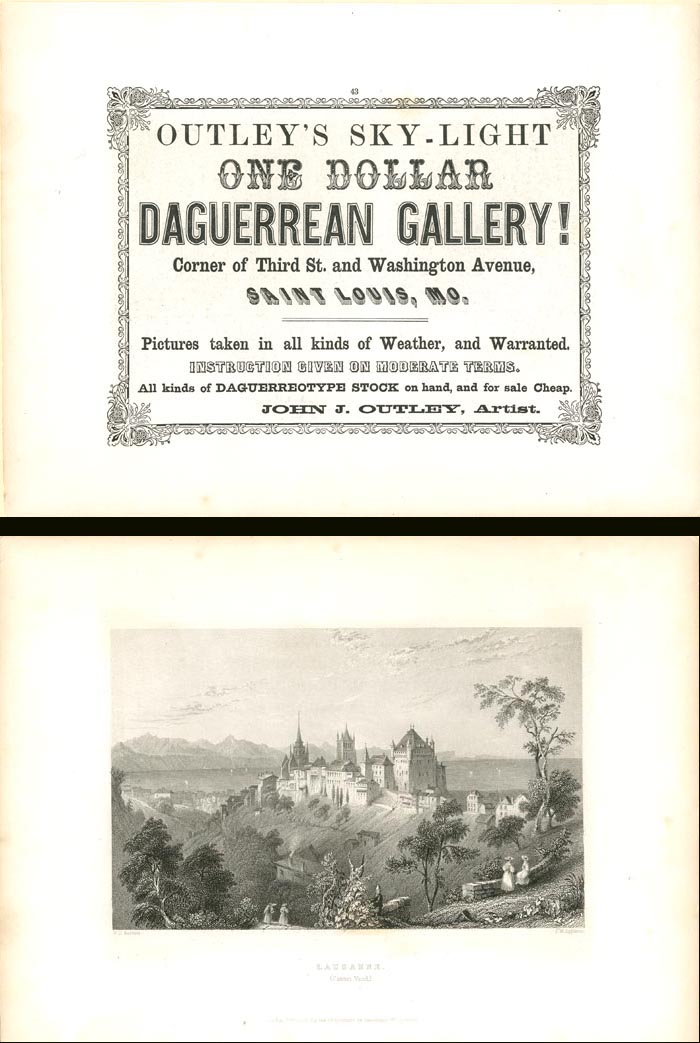Outley's Sky-Light Trade Card - Daguerrean Gallery - Americana
Inv# AM1246
Early daguerreotype trade card. Interesting document, a salesman's sample of a trade card for Outley's Sky-Light One Dollar Daguerrotype Gallery in St. Louis, MO. Printed on the verso of a Bartlett Print showing engraving of Lausanne. Outley's services include: "Pictures taken in all kinds of Wear, and Warranted. Instruction given in moderate terms. All kinds of Daguerreotype Stock on hand, and for sale Cheap." The card measures 10 1/2" x 7 1/2". Rare!
A trade card is a square or rectangular card that is small, but bigger than the modern visiting card, and is exchanged in social circles, that a business distributes to clients and potential customers, as a kind of business card. Trade cards first became popular at the end of the 17th century in Paris, Lyon and London. They functioned as advertising and also as maps, directing the public to the merchants' stores (no formal street address numbering system existed at the time).
The term, trade card, refers to a varied group of items made of paper or of card of varying sizes and shapes. Trade cards evolved in different ways in Britain, America and Europe, giving rise to wide variation in their format and design. The characteristic features of a trade card are that it is a small printed item, used by merchants and traders to give to their customers for their use as an aid to memory. Trade cards were sufficiently small so that they could be carried in the gentleman's pocket or lady's purse.
In its original sense, the "trade" in trade card refers to its use by the proprietor of a business to announce his trade, or line of business. Trade cards were widely used by retailers and tradesmen from around the late 17th-century in Paris, Lyon and London. In the period before mass media, they functioned as advertising and also as maps, directing the public to the merchants' stores (no formal street address numbering system existed at the time). The trade card is an early example of the modern business card. The use of trade cards in America became widespread from the mid-19th-century in the period following the Civil war.
The earliest trade cards were not cards at all, instead they were printed on paper and did not include illustrations. Later they were printed on the more substantial card and typically bore the tradesmen's name and address, and before street numbering was in common use, often included a long-winded set of directions on how to locate the store or premises. With the advent of commercial engraving and lithography, illustrations became a standard feature of even the most humble trade card. Eventually trade cards evolved into business cards, which are still in use today.










Ebay ID: labarre_galleries